How to set yourself up for a successful game localization project
Getting ready to localize your game? Learn what to consider before starting a localization project, from setting up your file to creating a style guide.
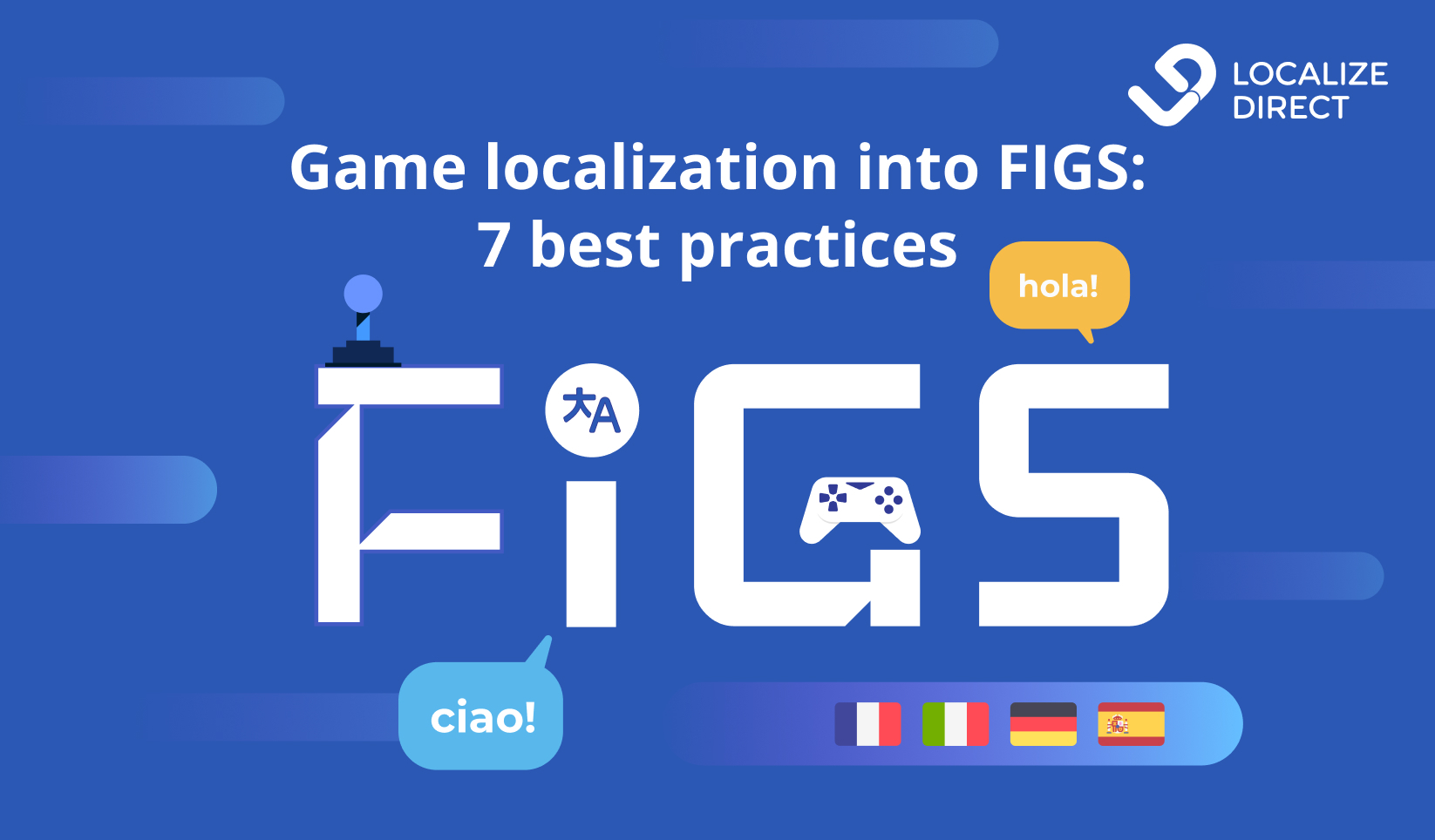
WHAT’S COVERED:
The major reasons to localize games into FIGS languages
Game localization to FIGS languages: 7 tips
For games released in English, the next step in widening the audience is often localization to major European languages. The localization industry even has a dedicated term for them: FIGS languages, which stand for French, Italian, German, and (European) Spanish.
These languages can indeed extend your reach to millions of players, as they are spoken not only in Europe but in many other countries all over the world (although you’ll have to mind regional differences).
In this post, we’ll talk about the potential of FIGS languages and reveal some of the best industry practices of game translation to French, Italian, German, and Spanish.
KEY TAKEAWAYS
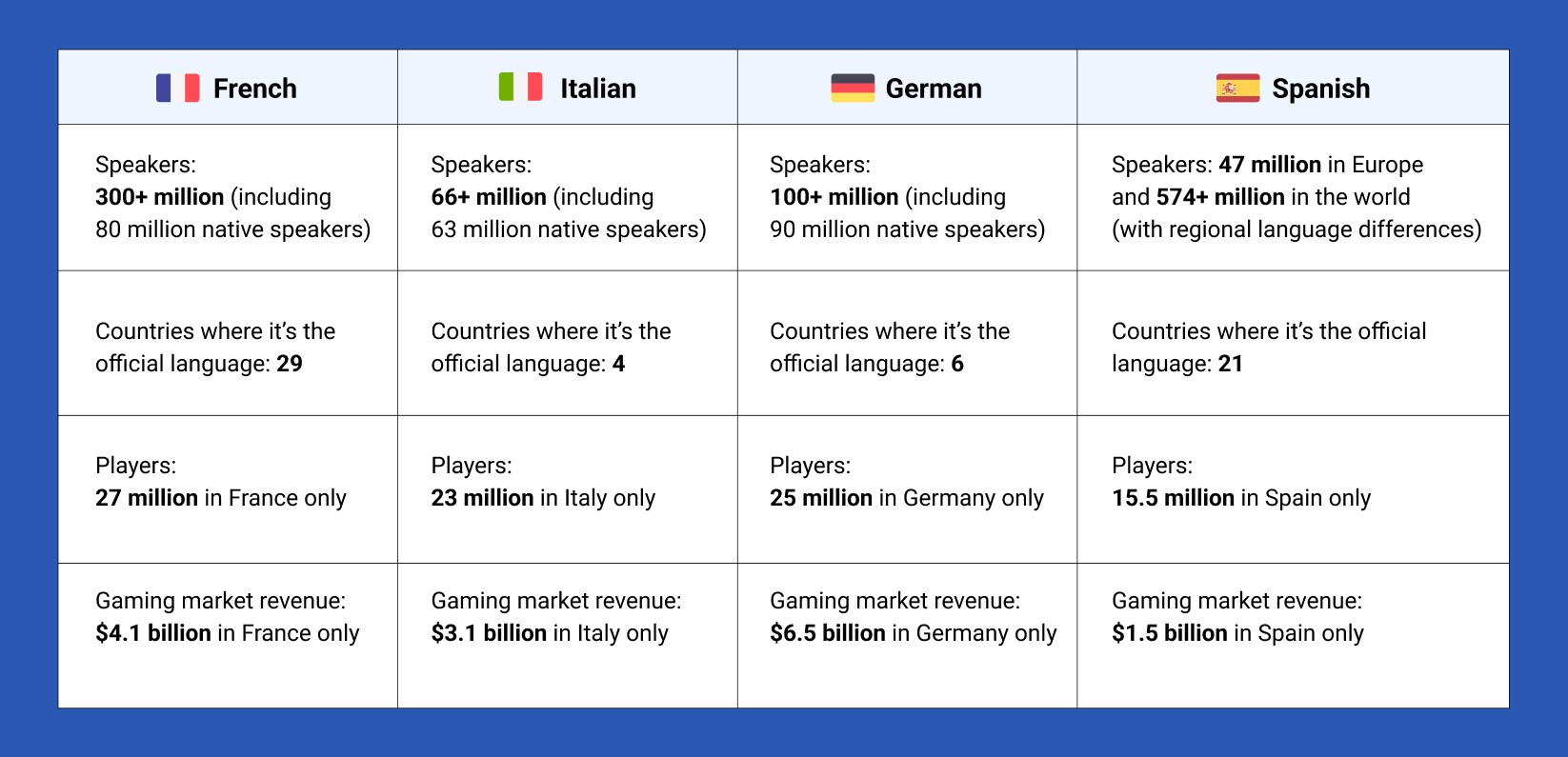
Let’s see why it might make sense for you to translate games into French, Italian, German, or Spanish.
First and foremost, European languages represent a big gaming market, even if we take into account only the major European countries where they are spoken.
While East Asian countries account for the biggest revenues in the game industry after the United States, they are tightly followed by European countries. For instance, in 2022, Germany, France, and Italy made $6.5, $4.1, and $3.1 billion, respectively.
Note: If you want to go global with your product, definitely consider game localization to Japanese, Korean, and Chinese.
Companies that provide localization services claim that FIGS are among the most popular languages for their clients. For instance, Unbabel calculated that 18% of their work is Spanish translation (10% to European Spanish and 8% for Latin American countries).
Such a dynamic shows that businesses see real value in reaching users speaking French, German, Italian, and Spanish.
All four countries of the FIGS languages showed a 22% year-on-year increase in gaming revenue, and more than half of the European population considered themselves active players. In 2022, European gamers spent €24.5 billion, which is a 5% increase compared to the previous year.
The spending is consistently growing in all major areas of gaming: people buy more PC and console games and make more in-app purchases in mobile games.
According to the 2023 data by Statista, there are 27.2 million players in France, 25.7 million in Germany, 23.6 million in Italy, and 15.5 million in Spain. Newzoo data reports even higher numbers.
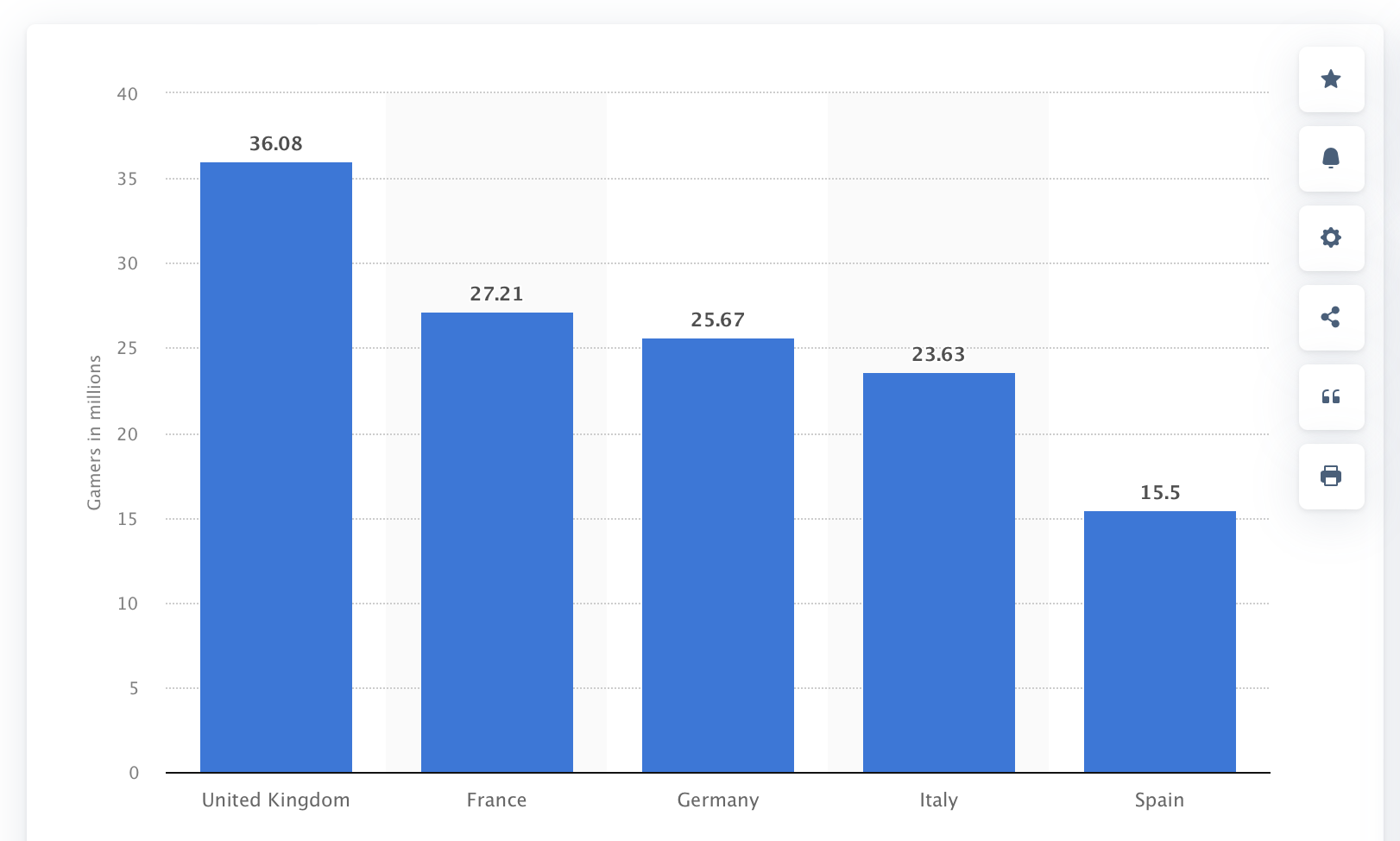
Number of players in major European countries. Source: Statista
While the above mentioned numbers only consider European countries, dozens of millions more people speak these languages (even hundreds of thousands if we take into account different variations of Spanish in Latin America).
On top of that, many players might want to try out games in FIGS languages because they are learning them. You can find many posts on language learning communities inquiring about high-quality translations of games in German, French, Italian, and Spanish.
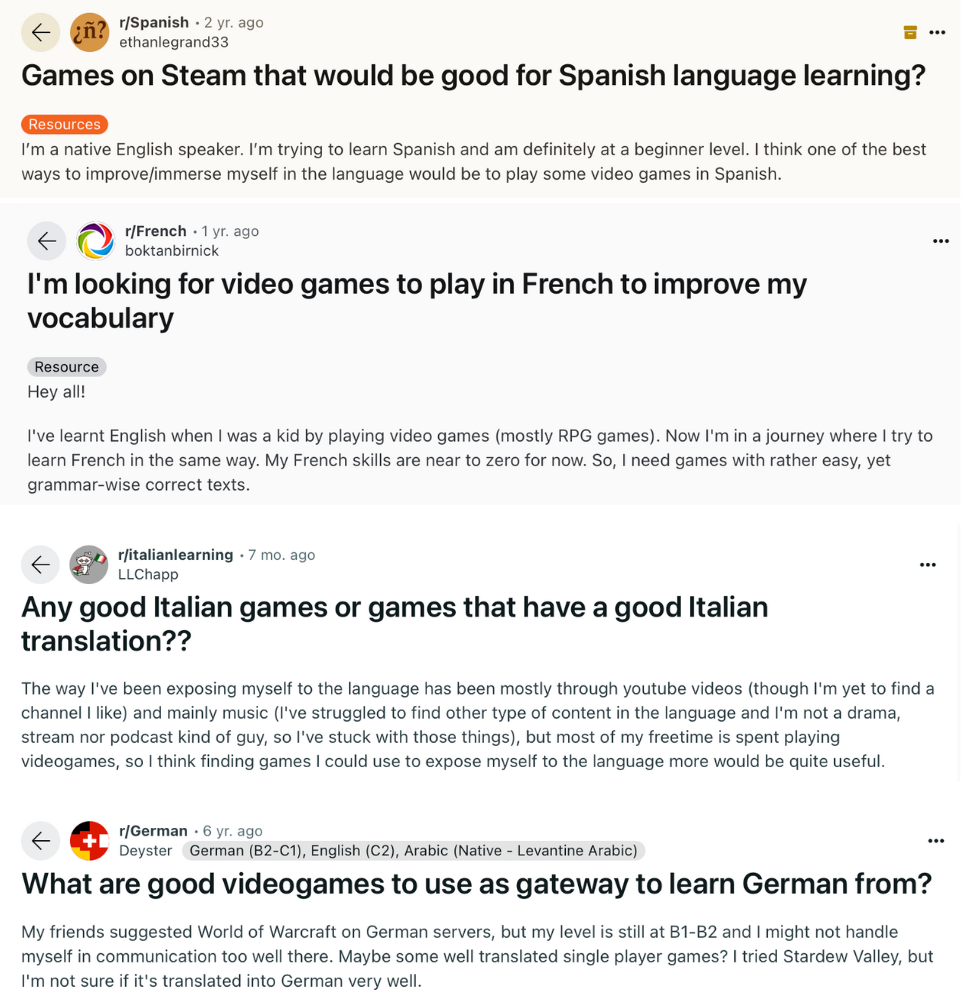
People looking for localized games to learn FIGS languages. Source: Reddit
Now that you know how big your game’s audience can be, let’s discover the 7 things to take care of before going on a journey to release your game in Spanish, Italian, German, or French.
It’s crucial to acknowledge varieties of FIGS languages that have distinguishable accents and some differences in vocabulary.
It’s quite rare for businesses to create separate translations for French varieties, but you still can use some distinguishing features to make the game localization more appealing to a particular region, especially if you’re planning to have dubbing.
There are European, North American, and African types of French, and each of them varies by region. Besides pronunciation differences that matter for dubbing, there might be vocabulary differences (for instance, the number 90 is spelled “nonante” in Belgian French and “quatre-vingt-dix” in standard French) and spelling differences (for example, the word “yes” is spelled “wi” in Haiti while being spelled “oui” in French for France).
If you don’t see the linguistic value of translating game content into a particular variety of French, you can still consider creating region-specific ad campaigns. For instance, Nintendo won over Quebecois players back in the 90s by releasing an ad that featured a popular Canadian actor and was based on local language and humor.
Italian is probably the easiest of the FIGS languages when it comes to regional varieties. There are not as many regions in the world where people speak Italian and thus you’ll face fewer chances of linguistic confusion.
Still, you can consider Italian accents or regional vernacular to add character to your Italian game translation. For example, if your English-speaking version of the game features a Southern American accent, you can utilize the Sicilian accent.
There are dozens of different dialects in German, but the standard German would be generally understood by all speakers.
You can still apply some differences to make your German game translation more relevant to a particular country. For instance, a simple “Hello” greeting is “Grüß Gott” in Austrian German while being “Hallo” in standard German.
There also can be some grammatical differences, so it’s important to test your game among native speakers of the target region.
Vocabulary might differ as well, which may lead to some funny mistakes. For example, the word “Laufen” changes its speed: it means “Walking” in Swiss German while meaning “Running” in German for Germany.
Releasing a game in Spanish poses the biggest challenges in terms of regional variety.
Spanish is the official language of 20 countries in Latin America, and practically every country has its own variation of Spanish. People there would normally understand European Spanish, but some pronunciation or word choice differences might lead to misunderstandings and errors in game translation.
In the localization industry, there has been a certain neutral version of Spanish created to be used in movies and games translated for Latin America. This neutral variation is a language that is not spoken anywhere but is basically a language stripped of all colloquialisms and slang words specific to different regions.
It’s still common to have two Spanish options in a game, European and Latin American, even though it’s an oversimplification that doesn’t cater to the needs of players in different Latin American countries.
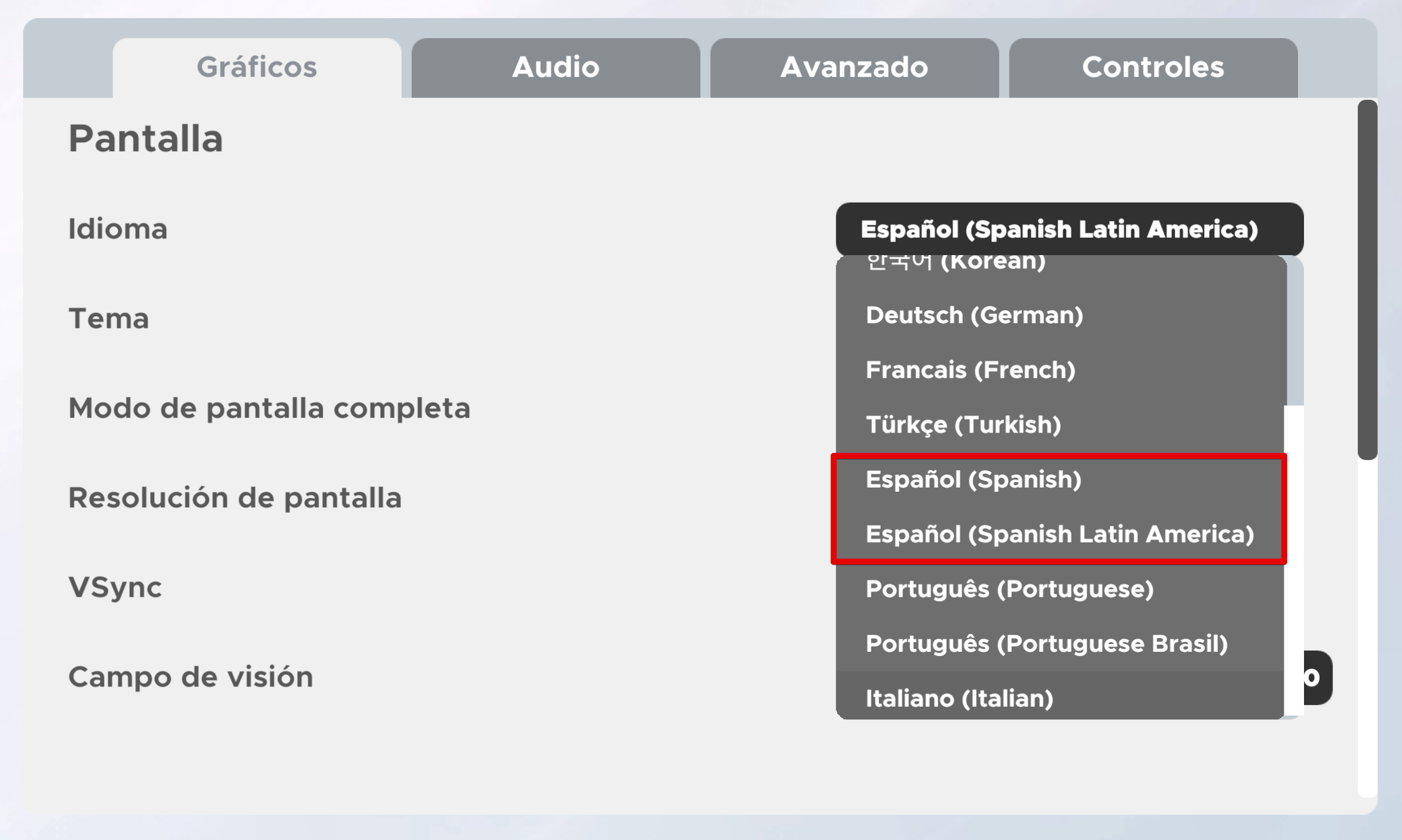
European and Latin American Spanish options in the localization of the Escape Simulator game
As an Argentinian translator explains, people in Latin America are used to hearing this so-called neutral Spanish in dubbed and subtitled audiovisual content but it’s still very unrelatable and bland.
For instance, the Spanish game localization of Grim Fandango has been criticized by many players as a missed opportunity to use the plot set in Mexico to its advantage. It also could be improved with the usage of appropriate vocabulary for Latin American countries. For example, “computer” in European Spanish is “ordenador,” but in most Latin American Spanish-speaking countries, it’s “computadora.”
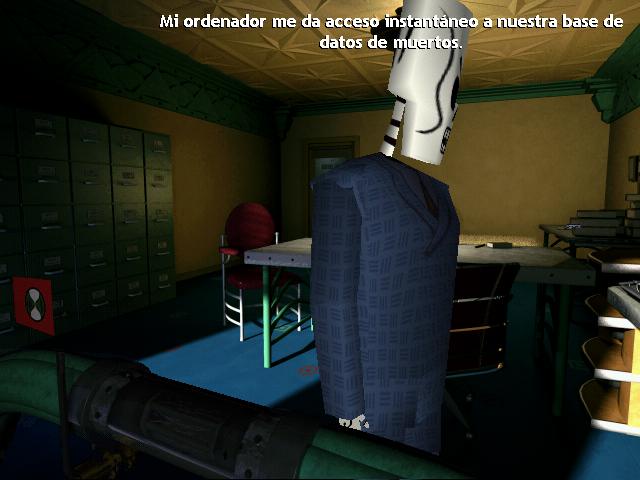
So-called neutral Spanish in the translation of the Grim Fandango game. Source
With that said, you should always engage native speakers of each target region in the game localization process and localization QA. There are differences in pronouns, some terms might be taboo only in specific countries, and there’s country-specific vernacular that is often crucial for the gaming experience.
All FIGS languages feature some special characters like “è”, “à”, “ò”, “ì” in Italian or “ä”, “ö”, “ü”, “ß” in German. When choosing layouts and fonts, make sure that all words are displayed correctly.
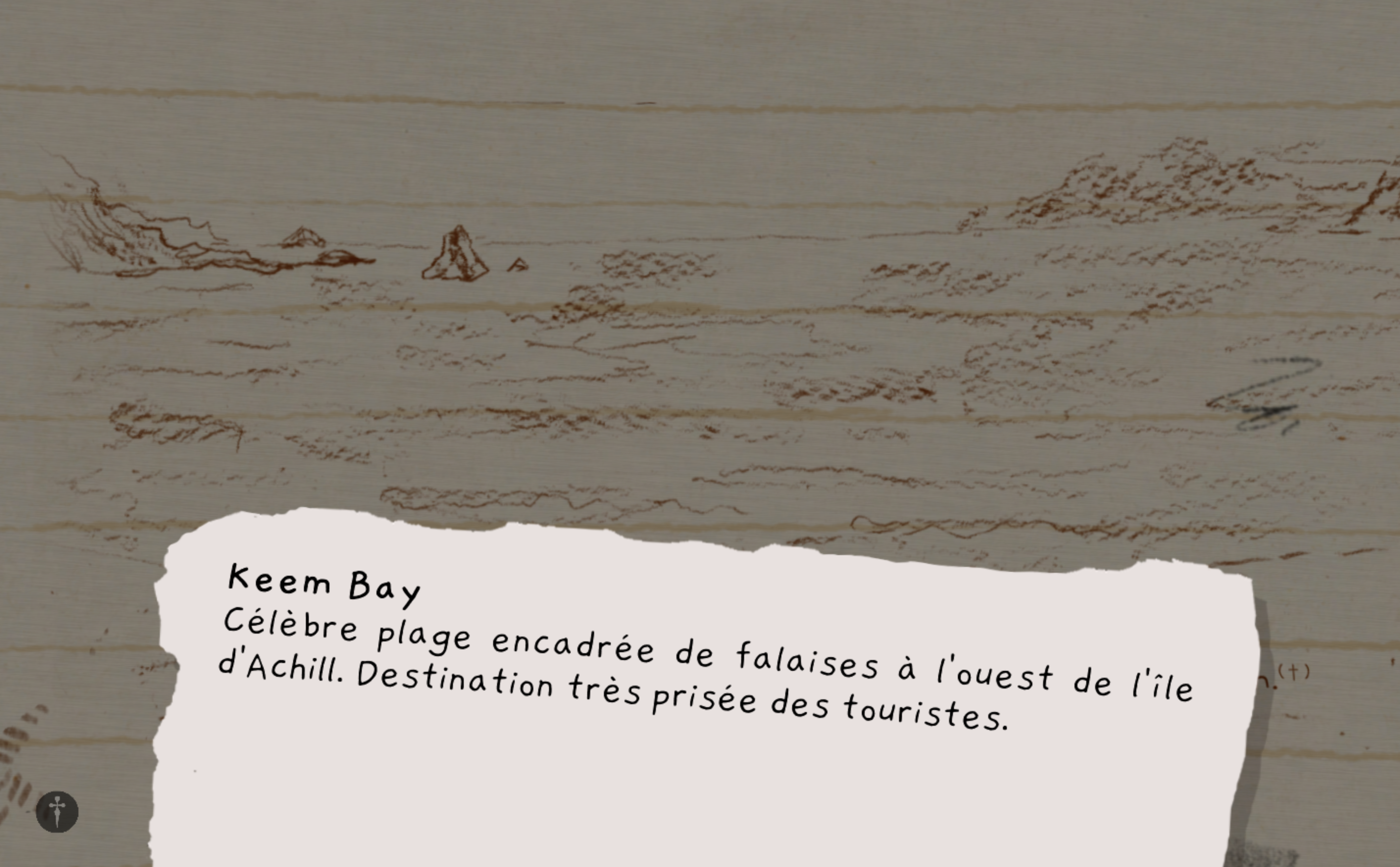
Special characters in the French translation of the If Found game
Compared to English, FIGS languages have grammar rules that change the form of nouns, adjectives, and verbs based on the gender and number of people.
For instance, a simple phrase like “Ready to go?” can pose numerous challenges when translating a game into French, Italian, German, or Spanish.
We need context to understand whether the person this phase is addressed to is male or female. If the phrase is addressed to the player, it should be rephrased to not include gendered grammar. We also need context to understand if the speaker is talking to one person or several people. Plus, we should understand the relationship between speakers, whether they require formal or informal phrasing.
For example, the Spanish translation of the phrase that avoids all these issues can be “¿Todo listo?” but it’s too bland and impersonal. It’s always better to have the full picture before translating a game to one of these languages.
Don’t let translators work blindly from a spreadsheet with no context: instead, provide them with screenshots and extensive character explanations, or give them time to play the game and learn all the details.
All FIGS languages have formal pronouns that don’t exist in English (for instance, “vous” is formal compared to “tu” in French while both mean “you”). To understand which pronoun to choose, translators should get the tone of voice of the game and the relationships between speakers.
Here’s, for example, the usage of formal and informal pronouns that indicate different relationships in the French translation of the Sherlock Holmes game:

Formal and informal pronouns in the French version of the Sherlock Holmes game. Source
The length of phrases is a common challenge in localizing games that are originally in English. In many cases, other languages will take much more space, and it should be considered when designing layouts for speech bubbles, menu items, and other game elements.
The rule of thumb here is to allow for up to 30% of text expansion and make the design dynamically expandable.
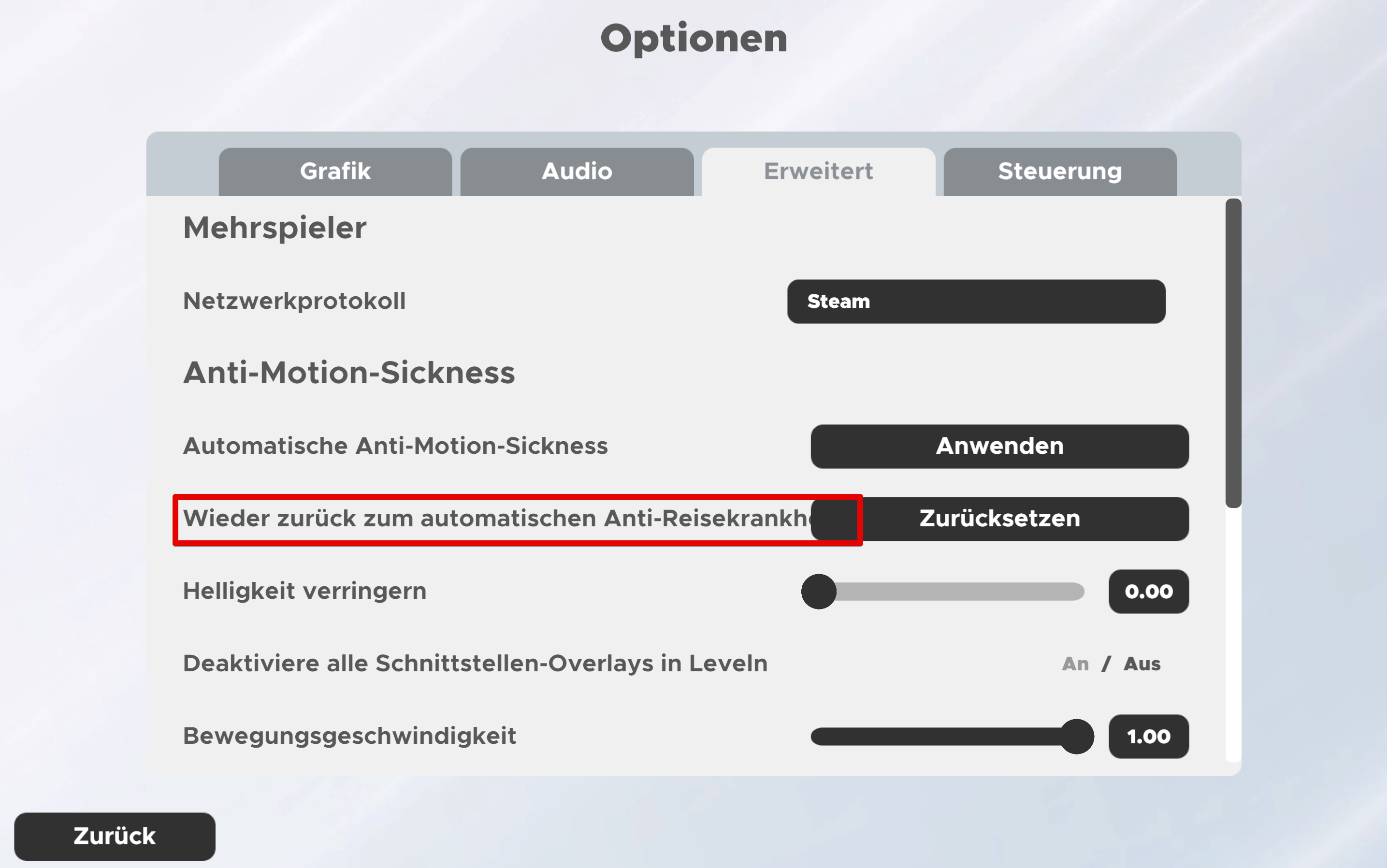
German phrases not fitting UI placeholders in the translated version of the Escape Simulator game
Little details like spaces before some punctuation marks in some languages might come as a surprise for non-speakers, but they are important for game translation. Here are the major formatting rules to follow when working on French, Italian, German, or Spanish game localization.
Another thing that is different from English is that punctuation marks are always placed outside quotation marks unless they’re part of the quotation.
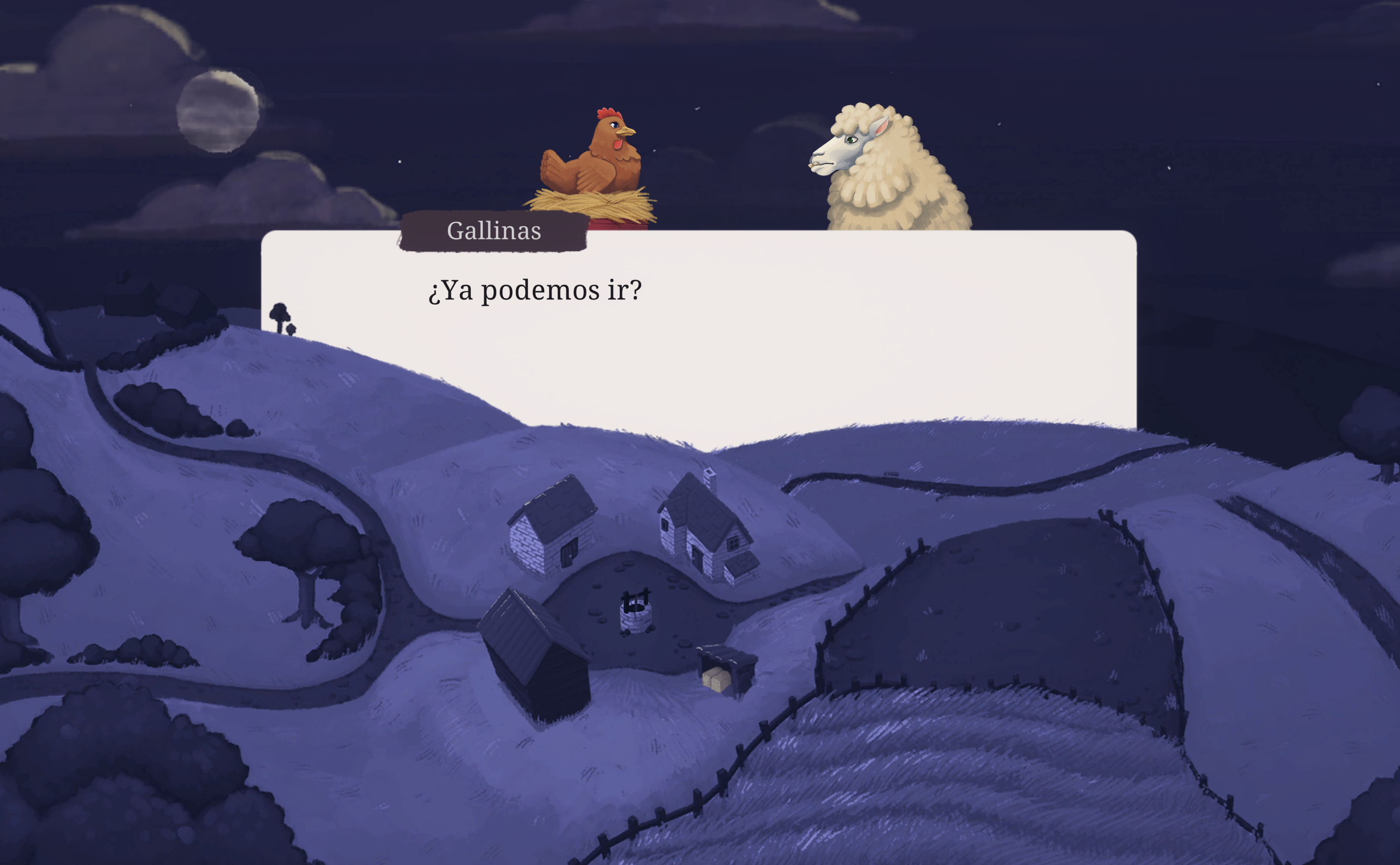
Spanish question marks in the Spanish game version of Animal Farm.
Correct measurement values or date and time notations shouldn’t be overlooked in the process of translating a game to French, Italian, German or Spanish.
For instance, French people are used to writing “10 h 45” instead of “10:45,” while Spanish people might write “31 de julio de 2024” instead of “15-07-2024.”
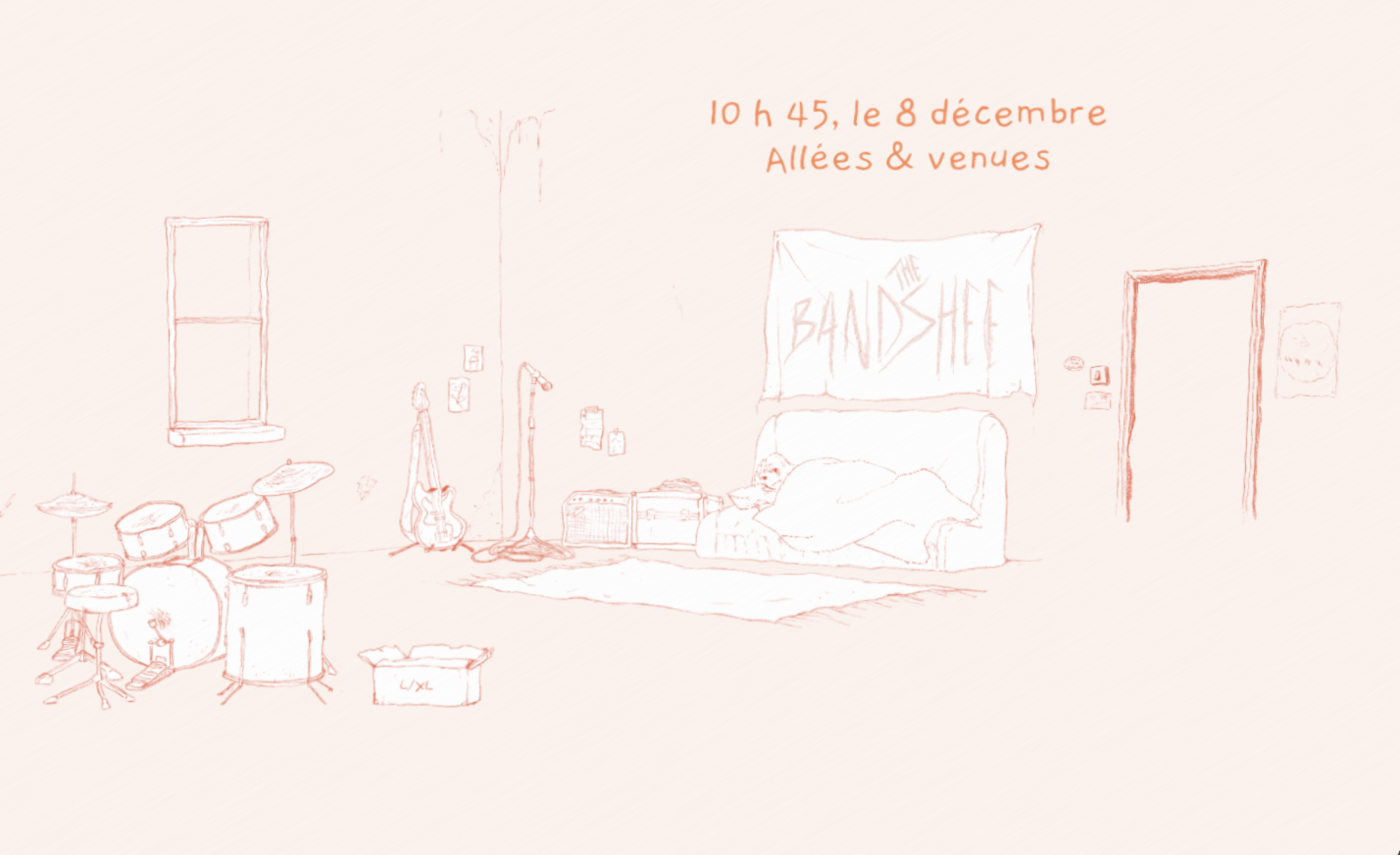
Culturally relevant date and time notation in the French translation of the If Found game
While you won’t have many issues with units of measurement as the respective European countries all use the metric system, note that Latin American countries, for example, use a mix of metric and imperial systems.
FIGS languages can be your pathway to millions of players not only in Europe but across the globe. But there are certain things to be aware of to create high-quality game translations.
For instance, you can use regional accents to highlight some content in the Italian or German version of the game, while you definitely should take into account different varieties of Spanish if you’re targeting Latin American countries and different varieties of French if you want to dub your game for different regions.
In any case, you should work with translators and reviewers who are native to the target region and understand contextual and linguistic nuances.
Looking for game translation services? The rates of translating a game to one of the major European languages start at €0.11 per word. Reach out to us if you want to learn more about the localization process, cost, and other details.
Getting ready to localize your game? Learn what to consider before starting a localization project, from setting up your file to creating a style guide.
Some Asian countries are absolute global leaders in the gaming industry: for instance, China, Japan, and South Korea are all in the top 4 by revenue after the US. Other markets (Southeast Asia and the Middle East) are some of the most rapidly growing ones, especially in the sector of mobile gaming.
